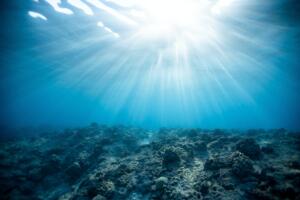5 Significant Impacts of Global Warming On Marine Biodiversity
Over the past few decades, global warming has grown into a notable issue that has affected all aspects of our lives and the planet we live on. Studies have shown that the earth’s oceans are the ones that take most of the brunt of global warming, resulting in a steady rise in the temperature of our oceans. Due to this, marine ecosystems have begun experiencing major changes that have threatened the living organisms that reside within these waters. The list below gives you an insight into how much this global issue has changed the natural structure of the affected bodies of water.
1. Coral bleaching
Just as humans do, corals can also experience great amounts of stress. This typically happens even with the slightest rise in temperature, which leads to the corals dispelling algae. Once algae or zooxanthellae has left, the corals turn into a white color — thus the term “bleaching”. A bleached coral reef is much more prone to starvation and diseases. If left untreated, they will be left unable to recover and continue to die out completely.
Numerous marine species, including different types of fish, shellfish, aquatic plants, microorganisms, and more, depend on coral reefs for their survival. These also support the species at the base of ocean food chains. Because of this, species that are already known to be vulnerable may go extinct when reef ecosystems deteriorate.
2. Fish migration
In order to survive, different species of fish have begun to move towards cooler waters — specifically those in the two opposing poles. With large masses of fish moving toward these areas, this leaves fewer species to reside in coastal and shallow waters, creating an imbalance in the number of prey and predators in a certain area. Even having one species migrate can cause a break in the entire food chain. This eventually leads to the extinction of one or more species.
3. Melting of ice caps and rising water levels
When you think of global warming, one significant effect that comes to mind is the melting of ice caps and glaciers. With warmer temperatures, even larger blocks of ice have become prone to melting, which then leads to a rise in the surrounding water levels. As these sea levels continue to surge due to melting glaciers, more frequent and more powerful coastal storms like hurricanes and typhoons are produced. This increases the likelihood of coastal erosion and storm surges.
The melting of sea ice also greatly affects both aquatic and semi-aquatic life forms in numerous ways. These large slabs of ice serve as a habitat for several animals, including seals and walruses. They’re also home to algae, which acts as a foundation in the Arctic food web, so a distinct lack of sea ice can create a significant domino effect on the different species included in the aforementioned web.
4. Changes in ocean currents
Currents get weaker as temperatures rise. Simply put, the water won’t be able to circulate as well if the water at the poles is not as cold and dense. Additionally, freshwater is being poured into the salty ocean as a result of the melting of the Greenland continental ice sheet, changing the density of the water masses once more.
With altered water density, it makes it much more difficult for compounds like carbon dioxide and oxygen to circulate within the different areas of the ocean. Deeper parts of the ocean will be left with a shortage in the supply of oxygen, thus making it unlivable for certain species.
5. Disruption of seawater chemistry
With greater amounts of carbon dioxide present in the atmosphere due to global warming, oceans also absorb large amounts of it. After carbon dioxide has been dissolved in the water, carbonic acid is formed which causes acidification. The minerals that oysters, clams, lobsters, shrimp, coral reefs, and other marine species utilize to form their shells and skeletons can become depleted as a result of ocean acidification.
What can you do to help?
There are a number of simple yet powerful ways you can help preserve these bodies of water, even from the comfort of your home.
- Dispose of trash properly
Start off by being more mindful of the things you throw out and dispose of items in their proper areas to avoid them from making their way into the water and further harming the living organisms that reside within.
- Monitor your carbon footprint
You can also try cutting down on your carbon emissions by using more eco-friendly energy sources and minimizing the use of energy when you can.
- Watch your water waste
Another practice you can implement in your daily routine is monitoring the water you use. Eventually, water from your shower drain or kitchen sink will also make its way into the ocean, so make sure to check for any harmful chemicals that you may just be washing down the drain.
The bottom line
Global warming has made a number of significant impacts on the marine ecosystem that have negatively affected the numerous organisms that live in these waters, as well as the people that rely on these bodies of water for sustenance and livelihood. However, this doesn’t mean that it’s too late to take the necessary steps to reverse these effects. By making a conscious effort to practice eco-friendly actions, you can make a great change in the uphill battle to preserve the earth’s oceans.
Volunteer writer: Myrtle Bautista


